
Cold brewed coffee is all the thing these days. And you’ve probably heard that we’re not supposed to make sun tea anymore, but fridge tea instead–which is cold brewed tea. In fact, cold brewing allows you to throw just about anything you’d brew hot into cold water instead, refrigerate it overnight and end up with something refreshing, cold and delicious to drink the next day.
Proponents of cold brewing point out that though it takes longer than hot brewing, it preserves the more delicate scents and flavors of whatever you’re brewing, and minimizes the bitter and vegetal overtones which come from heating and from overbrewing.
Most importantly from my standpoint, you don’t have to heat water. You don’t have to get anywhere near the stove, and the finished product is nice and cold and ready to guzzle.
Cold Mint Tea
My everyday summertime fridge staple is cold mint tea (tisane, technically). I make this by simply throwing a handful of dried mint leaves (harvested from my rangy mint plant) into a jar, adding filtered water, and leaving it in the fridge for the length of a day, or overnight. Then I strain the tea to remove the leaves and keep the tea in the fridge. I never measure anything. You can make the tea stronger and dilute it to taste if necessary, or make it very weak, so it’s just cold water with a delicate breath of mint to it. It’s good no matter what you do. If you don’t have a mint plant, use a couple of mint tea bags.
Jamaica
If you don’t mind a little added sugar in your bev, jamaica (hibiscus flower tea) is a really nice summer drink, tart and sweet and refreshing. And as a bonus, my herbalism teacher tells me all that rich red flower power is good for you, too.
You can buy bags of dried hibiscus/jamaica flowers inexpensively in the spice aisle of any Latin market, in the same area where you’d find dried peppers and the like. If you can’t find the flowers, you may be able to find bagged hibiscus tea.
Cold brew jamaica by placing about a 1/2 cup of the dried flowers into a quart jar and top with water. I am ever grateful to The Kitchn for turning me on to the idea of adding a cinnamon stick to this brew. Cinnamon adds a really nice, sophisticated touch to the flavor. (The whole article is worth a read for some in-depth jamaica talk.) Let this sit overnight, or most of the day, strain and add sweetener to taste. It’s easiest to use simple syrup.
A taste of the wild
Our friend Pascal, who is on our podcast this week, usually shows up at parties with a big jug of cold infusions of foraged plants. He talks about this in his book, The New Wildcrafted Cuisine. He uses whatever is in season at the time, an eclectic mix that may include wild mints, elderflowers, conifers like white fir and pine, herbs like black sage and berries of all sorts. Sometimes he adds less-wild ingredients, like lemons or honey. He leaves all these things swirling around in the jug at table, so that the sight of the infusion is almost as arresting as the taste.
Pascal’s beautiful infusions should give you the courage to grab a few things from your garden and see what happens.
Spa water
If you’re not up for infusing the entire forest into your drinking water, what about cucumbers? It’s easy to forget how good simple infusions are to have around. A few cucumber slices, a cup of watermelon chunks, a handful raspberries–all these things make iced water a little more fun. Just use whatever you have leftover on any given day–that spare half of a lemon, a melon slice that no one seems to want, that extra handful of herbs. My favorite Mexican restaurant in Los Angeles, Cacao, puts sprigs of rosemary in its table water.
Other herbal experiments
Experiment with other teas and herbs you have in your cupboard. For instance, I quite like cold brewed chamomile tea. Erik does not, however. Tastes do vary! Any of your favorite bagged hot teas might be good cold. It’s a good way to use them up if your tea collection is taking over your kitchen cabinet.
A healthy if decidedly green tasting option is dried nettle cold brew. Cold brewed nettles taste a little less like a cook vegetable than hot brewed nettles. Sometimes I mix nettles and mint half and half, to make the nettles a little more sprightly.
Extreme wonkery over iced tea and iced coffee
I am a lazy person. I enjoy sitting in my proverbial armchair and reading about other people’s obsessive quests to make things like the perfect cold brewed iced tea, but when it comes time to make it myself, I always end up just throwing a few things together and seeing what happens.
I always enjoy the experiments in the Food Lab over at the Serious Eats site, and I send you there if you want to up your fridge tea game:
The Tea Lover’s Way to Make the Best Cold Brewed Iced Tea
For The Best Sun Tea, Forget the Sun
(Amusingly, the different authors don’t exactly agree on the best route to iced tea, which only reinforces my laissez–faire attitude. But they’re great reads.)
And here’s their take(s) on cold brewing coffee:
It’s Time to Make Cold Brewed Coffee
Or maybe not?
What’s the Best Way to Brew Iced Coffee?
So brew yourself up something refreshing, find yourself a seat in the shade, and enjoy the summer!

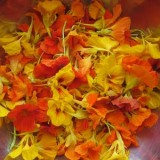
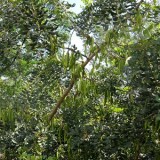
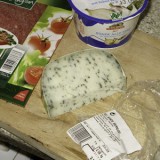
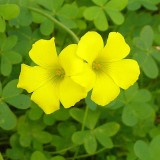
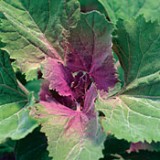
Nettle and mint (nettermint) is a favorite combo of mine, too!
My summer time favorite is sparkling mineral water with lemon, lime, or the many flavors of syrup that can be found in Middle Eastern markets. When using plain water I add a couple of strawberries with the mint. Yum.
I’ll have to try the rosemary now.
In the summertime, just make your tea by leaving the jar outside. Put your favorite herbs in them – lemon balm, chamomile, mint, lemon verbena…
Sun tea, because it stays at an unsafe temperature for long periods of time, can allow bacteria to grow which are unpleasant or dangerous for people to drink, just like leaving food out for too long on the counter… herbs are not sterile
http://www.snopes.com/food/prepare/suntea.asp
Plain water is ruined for me with the addition of anything else. That said, I do like tea with no sweetener at all, just ice cubes. I have always thought tea made in the sun sounded risky. I refuse to even refrigerate tea or drink tea left out overnight. It tastes funny. Since I like my tea on the weak side, I cannot drink the brewed tea before I go to bed, so I pour it out. This problem was solved by buying Lipton instant tea. This information might make me seem oh-so-unsophisticated.
When I grew up, we drank water or the brewed, unsweetened tea Mama served. We rarely had anything else–Coke maybe one a month and then half of a six-ounce Coke. Kool Aid was made maybe twice during the summer.
Thanks, Snopes, for proving me right.
By the way, what part of the conifer is used for tea?
Re: what parts of the conifer are used for tea – hot pine needle tea is a classic. For infusions, Pascal frequently uses whole soft branches of white fir. Some people use green cones. Spruce tips are good, too.
I just stick herbs or tea or herbs and tea in a half gallon mason jar with water and leave in the sun. I don’t measure anything. Put in in the fridge and tomorrow I’ve got iced tea. Which I don’t even drink with ice, because that’s to much of a pain to get out of the trays.
Ah, but why not throw it all together in a jar, put in the fridge overnight, and you’ll have the same thing, already chilled and ready to drink, in the morning?